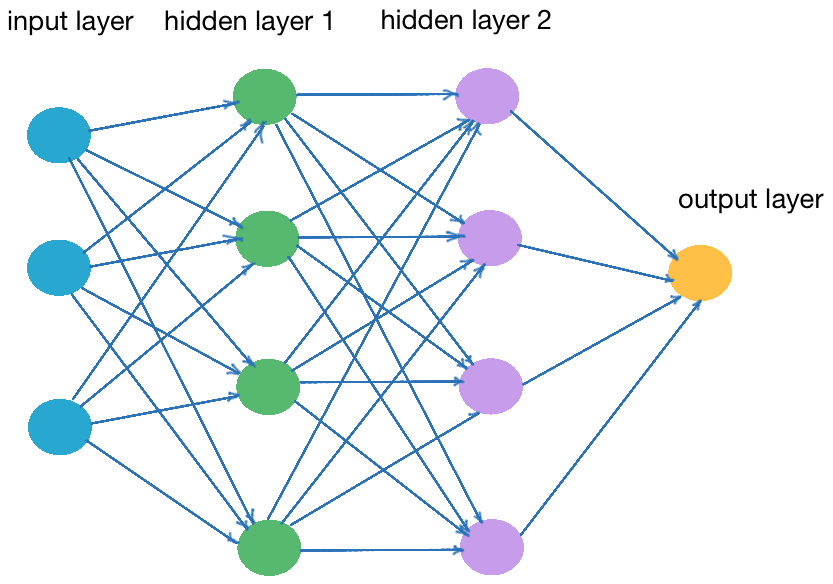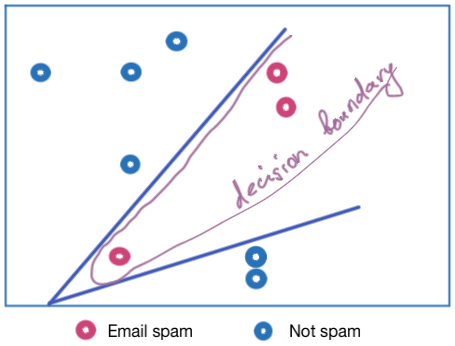Introduction
Artificial neural networks (ANNs) are the cornerstone of Deep Learning algorithms. In this post, I briefly explain ANNs, their high-level structure and parameters.
Neural Networks
The name “Neural Networks” and their architecture are adopted from the human brain’s neural network. ANNs are designed to simulate human reasoning based on how neurons communicate. ANNs contain a set of artificial neurons connected.
In the picture below, we see the biological and artificial neurons. The artificial neuron is very simplified, and it consists of inputs, which are similar to dendrites in the biological neuron. Each input connection has an assigned weight, and both values are used to calculate the sum value. The weights define the importance of any given variable, and variables with larger weights contribute more to forming the output value. The activation function takes the sum of weighted inputs and forms the output Y. When the Y node is activated (or exceeds a threshold), it sends the output value to the next layer of the ANN.

Neuron Parameters
As we see from the artificial neuron picture above, the neuron takes in n-inputs x1, x2, .., and xn. These input values, called features, are multiplied with respective weights w1, w2, .., and wn, and further summed up with bias. The weights w1.. wn can be initialised with random values. To create a well-performing neural network, we adjust weights using optimisation algorithms such as Gradient Descent. The main goal is to reduce error or loss function.
Multilayer ANNs
Multilayer ANNs are created from one input, one or more hidden, and one output layer. The figure below shows a multilayer ANN with two hidden layers. Each of the colored cycles is a neuron, and we have four neutrons in each hidden layer.

Why do we need hidden layers in ANNs? Hidden layers are required when we have non-linear data, for instance, in the prediction task, classes cannot be separated linearly. For instance, in a spam - not spam classification problem, we might have a dataset depicted below. As we see, the decision boundary to separate two classes can be enclosed by two lines, which essentially are linear regressions or two neurons. Therefore, we set two neurons in one hidden layer further connected with the output neuron.

Neuron Activation
The output result Y will depend mainly on the activation function F. There are several options for the activation functions, including the Rectified Linear Activation function (ReLU), Hyperbolic Tangent (Tanh), or Sigmoid Activation function. The choice depends on the problem, and we might compare results using different experiment activation functions. The most used by default, most straightforward, and addressing the vanishing gradient problem such as present in Tanh function, ReLU activation function is also easy to compute as max(0.0, x), wherein x is the result of summation on the previous step.
The figure below demonstrates the vanishing gradient problem in the Tanh function compared to the ReLU. As we see from the ReLU function, its derivative at values x<0 equals 0. Note that we consider that the derivative at x=0 equals 1. The derivative at x>0 equals 1. In contrast, Tanh’s derivative gives values of 0 at a broader range of values. This demonstrates the vanishing gradient situation when the derivative becomes small, and it is harder to train the ANN. This situation is particularly challenging in large ANNs, wherein very small derivatives are multiplied for all layers.
# Example plots for the tanh and ReLU activation functions
from math import exp
from matplotlib import pyplot
# tanh activation function with derivative
def tanh(input):
output = (exp(input) - exp(-input)) / (exp(input) + exp(-input))
d = 1-output**2
return output, d
# The relu activation function and its derivative
def relu(input):
output = max(0, input)
# Return the value just calculated with derivative
if input >= 0:
return(output), 1
else:
return(output), 0
inputs = [x for x in range(-7, 7)]
# calculate outputs for Tanh
outputs_tanh = [tanh(x)[0] for x in inputs]
outputs_tanh_derivative = [tanh(x)[1] for x in inputs]
# calculate outputs for ReLU
outputs_relu = [relu(x)[0] for x in inputs]
outputs_relu_derivative = [relu(x)[1] for x in inputs]
plt.figure(figsize=(12, 6))
plt.subplot(1, 2, 1)
pyplot.plot(inputs, outputs_relu, label = "ReLU", color = "blue", linewidth = 2)
pyplot.plot(inputs, outputs_relu_derivative, label = "ReLU derivative", color = "red", linewidth = 2)
pyplot.legend()
plt.title("ReLU")
plt.xlabel('x')
plt.ylabel('y')
plt.subplot(1, 2, 2)
pyplot.plot(inputs, outputs_tanh, label = "Tanh", color = "blue", linewidth = 2)
pyplot.plot(inputs, outputs_tanh_derivative, label = "Tanh derivative", color = "red", linewidth = 2)
pyplot.legend()
plt.title("Tanh")
plt.xlabel('x')
plt.ylabel('y')
fig = plt.figure(figsize=(8, 6))
plt.show()

In his post How to Choose an Activation Function for Deep Learning, Jason Brownlee describes the general practice in choosing the activation function for hidden and output layers of ANNs. For selecting the activation function for hidden layers, ReLU activation function is helpful for network types of Multilayer Perceptron and Convolutional Neural Networks. In contrast, Recurrent Neural Networks can be used with Tanh or Sigmoid activation functions. The output layer’s activation function depends on the task we are solving. For instance, we can use Linear Activation with regression tasks, or SoftMax.
Applications and APIs
To sum up, ANNs allow the creation of robust algorithms for efficient classification and other artificial intelligence tasks. For instance, image recognition and classification of objects are applications of ANNs. Deep Neural Networks are particularly successful in problems such as face recognition or detecting abnormalities in medical images (Image Recognition with Deep Neural Networks and its Use Cases). At the moment, we can use out-of-box cloud-based machine learning solutions, for instance, Vision API for facial and natural landmarks detection, logos, and explicit content, and AutoML Vision by Google for image annotations (Image Recognition APIs: Google, Amazon, IBM, Microsoft, and more).
Did you like this post? Please let me know if you have any comments or suggestions.
Posts about Machine Learning that might be interesting for you
